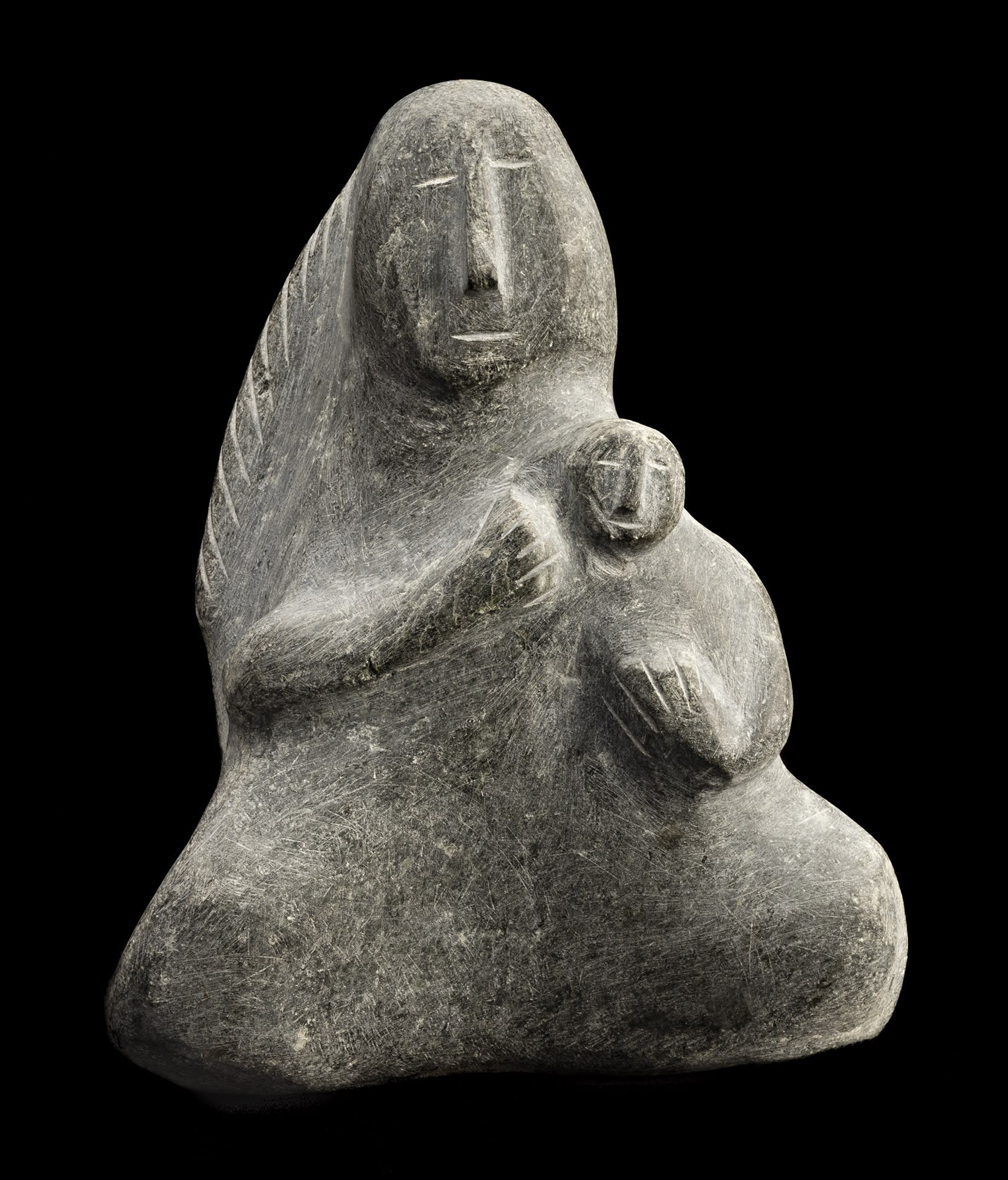Lot 59
ELIZABETH NUTARAALUK AULATJUT (1914-1998), ARVIAT (ESKIMO POINT)
Mother and Child, c. 1970-72
stone, 8 x 6.5 x 3 in (20.3 x 16.5 x 7.6 cm)
unsigned.
Estimate: $6,000 — $9,000
Provenance
Acquired from the artist by Edith Cram, while she was living in Arviat from 1970-73;
Inuit Gallery of Vancouver;
Acquired from the above by the present American Private Collection, 2010.
Before I carve I think about women, how they lived a hard life before, they were always cold. Sometimes I carve a woman in labour… When I make my carvings I think of how weak and cold I used to be, how I had to carry firewood on my back, that's what I remember… My carvings of mothers and children represent me trying to keep the child from crying and trying to do work at the same time… When you see a carving, please understand that it represents the lifestyle of the Inuit, how they worked and how they lived [1].
Nutaraaluk's classic depictions of mothers and children from the early to mid 1970s possess an extraordinarily lyrical quality. Nutaraaluk, who had suffered for and with her family through famine and relocation seemed to pour every bit of her heart and soul into the works. The combination of rawness and tenderness, love and anguish, hope and weariness are all poignantly expressed. In Mother and Child, the sculpture's overall soft form is beautifully punctuated by the artist's trademark hatch lines representing braids and hands - Nutaraaluk's symbols of motherhood. The British museum director and author Julian Spalding's poetic commentary on a similar work in the Sarick Collection at the AGO seems apt here as well:
This stone is like a womb. The figures are wrapped up in it as bodies are wrapped up for warmth, especially babies just after birth. But their extremities are exposed - to cold, death and grief… This is heartfelt sculpture, genuine expression without any trace of pretension, worthy in its modest way, to sit alongside the works of Barlach, Moore and Michelangelo [2].
1. Artist interviewed by Ingo Hessel, August, 1989, published in Ingo Hessel, Arctic Spirit (Douglas & McIntyre/Heard Museum, 2006), p. 41.
2. Quote from the commentary on Nutaraaluk's Mother and Child c. 1972 (Sarick Collection, AGO) in Julian Spalding, The Best Art You've Never Seen (London: Rough Guides, 2010), p. 190.
References: For similar works by the artist see Marion Scott Gallery, Vision and Form (Vancouver, 2003), p. 122; and Inuit Gallery of Vancouver, Classic Inuit (2005) cat. 30. For another similar example in the Sarick Collection at the AGO, see Ingo Hessel, Inuit Art: An Introduction (Douglas & McIntyre, 1998), fig. 104; also illustrated in Julian Spalding, The Best Art You've Never Seen: 101 Hidden Treasures from Around the World (London: Rough Guides, 2010), p. 191. For another see Ingo Hessel, Arctic Spirit (Douglas & McIntyre/Heard Museum, 2006) cat. 39; also illustrated in Walker's Auctions, Nov. 2016, Lot 133.

